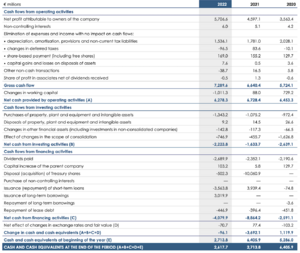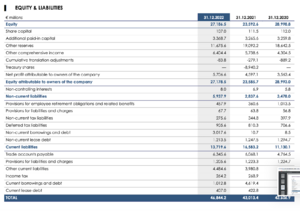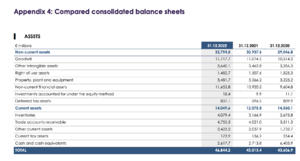L'Oréal S.A.
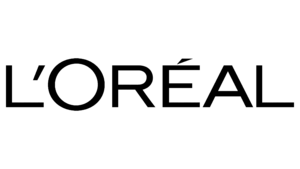 | |
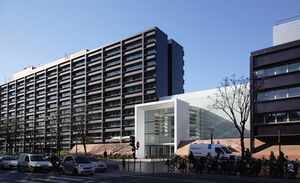 Headquarters in Centre Eugène Schueller, Clichy, Hauts-de-Seine, France | |
| Type | Public |
|---|---|
| Industry | Cosmetics |
| Founded | July 30, 1909, in Paris, France |
| Founder | Eugène Schueller |
Number of locations | Locations in 150 countries |
Areas served | Europe, North America, Asia Pacific, Middle East, South America, Africa |
Number of employees | 87,264 (2022) |
| Website | |
Summary edit edit source
L'Oréal S.A., through its subsidiaries, manufactures and sells cosmetic products for women and men worldwide. The company operates through four divisions: Consumer Products, L'oréal Luxe, Professional Products, and Active Cosmetics. It offers shampoos, hair care products, shower gels, skin care products, cleansers, hair colors, styling products, deodorants, sun care products, make-up, perfumes, etc. It sells its products through distribution channels, such as hair salons, mass-market retail channels, perfumeries, department stores, pharmacies, drugstores, medical spas, branded retail, travel retail, and e-commerce. L'Oréal S.A. was founded in 1909 and is headquartered in Clichy, France.
Business description edit edit source
For over 110 years, L’Oréal, the world’s leading beauty player, has devoted itself to one thing only: fulfilling the beauty aspirations of consumers around the world. Our purpose, to create the beauty that moves the world, defines our approach to beauty as inclusive, ethical, generous and committed to social and environmental sustainability. With our broad portfolio of 36 international brands and ambitious sustainability commitments in our L’Oréal for the Future programme, we offer each and every person around the world the best in terms of quality, efficacy, safety, sincerity and responsibility, while celebrating beauty in its infinite plurality.
With 87 400 committed employees, a balanced geographical footprint and sales across all distribution networks (e-commerce, mass market, department stores, pharmacies, hair salons, branded and travel retail), in 2022 the Group generated sales amounting to 38.26 billion euros. With 20 research centers across 11 countries around the world and a dedicated Research and Innovation team of over 4,000 scientists and 5 500 tech and digital professionals, L’Oréal is focused on inventing the future of beauty and becoming a Beauty Tech powerhouse.
L'Oréal Group: Inspiring Beauty Across Diverse Brands edit edit source
L'Oréal Group, headquartered in Clichy, France, stands as a global leader in the beauty and cosmetic industry. With a legacy dating back to its foundation in 1909 by visionary chemist Eugène Schueller, the company has evolved into a powerhouse of innovation, creativity, and inclusivity.
Driven by a passion for enhancing self-expression and confidence, L'Oréal has nurtured an extensive portfolio of iconic brands spanning skincare, cosmetics, haircare, and fragrances. Its commitment to understanding the ever-evolving needs of consumers has propelled the company to the forefront of the beauty landscape, touching lives across continents.
Skincare and Cosmetics: edit edit source
L'Oréal's diverse range of brands empowers individuals to celebrate their unique beauty. From the timeless elegance of Lancôme and Yves Saint Laurent Beauté to the vibrant, trend-setting Maybelline New York and the trusted care of Garnier and La Roche-Posay, L'Oréal offers a comprehensive array of skincare and cosmetic options that cater to varying preferences and cultures.
Haircare: edit edit source
L'Oréal's haircare brands, including L'Oréal Professionnel, Kérastase, Redken, and Matrix, revolutionize hair care through innovation and expertise. These brands cater not only to the aesthetic aspirations of individuals but also to the professional needs of salons, hair stylists, and enthusiasts.
Fragrances: edit edit source
Fragrance is a channel of personal expression, and L'Oréal's fragrance brands capture a multitude of scents that resonate with diverse personalities. From the timeless elegance of Ralph Lauren Fragrances to the daring spirit of Diesel Fragrances and the creative artistry of Maison Francis Kurkdjian, the fragrance portfolio evokes emotions and memories.
Professional Beauty: edit edit source
L'Oréal's Professional Products Division serves as a bridge between artistic creativity and technical mastery in the world of beauty. Brands like L'Oréal Professionnel, Kérastase, Redken, and Matrix empower professionals to craft stunning transformations while nurturing hair health.
In the digital age, L'Oréal is not only a creator of products but also a pioneer in digital transformation. Through mobile apps, online platforms, and virtual experiences, the company engages directly with consumers, enriching their journeys in the world of beauty.
As an industry leader, L'Oréal is committed to sustainability, aiming to reduce its environmental impact and promote ethical practices throughout its supply chain. The company's dedication to responsible beauty echoes its belief that beauty is not just skin deep; it's a holistic journey that encompasses the well-being of individuals and the planet.
L'Oréal Group, with its rich heritage and unyielding commitment to innovation and diversity, continues to shape the beauty industry. Across its vast brand portfolio, the company invites individuals to explore, experiment, and celebrate their unique beauty, inspiring confidence and self-expression around the world.
Company mission edit edit source
The desire for beauty has existed since the beginning of humanity.
It’s a universal aspiration which crosses time, countries, and cultures.
Beauty is a powerful force that moves us.
We know that beauty is more than just looking good.
Beauty gives us confidence in who we are, in who we want to be, and in our relationships with others.
For over a century we have been dedicated to one sole vocation: creating beauty.
We remain true to the pioneering spirit of our founder and enjoy the unwavering support of his family, who have always accompanied our development.
Our goal is to offer each and every person around the world the best of beauty in terms of quality, efficacy, safety, sincerity and responsibility to satisfy all beauty needs and desires in their infinite diversity.
Because beauty is a permanent quest, we harness the power of our innovation to continually enhance the performance of our products and services.
Because we value diversity, we leverage each of our brands to celebrate all expressions of beauty.
Because we strive to be exemplary with a long-term vision, we anchor our actions in our strong values and demanding ethical principles.
And because we are the global leader in beauty, we are aware that everything we do can have a meaningful impact.
Therefore:
We act to shape the future of beauty by leveraging the best of science and technology, increasingly inspired by nature.
We act to drive social innovation by offering the best working conditions, training, and social protection for our employees.
We act to build a business with inclusivity at its heart by ensuring we are as diverse as the people we serve.
We act to nurture lasting partnerships with our clients and suppliers based on mutual trust and collaboration.
We act to create value for all our shareholders, by sustaining a robust business model.
We act to champion the cause of women and to strengthen the communities with which we engage.
We act to protect the beauty of the planet by fighting climate change, respecting biodiversity and preserving natural resources.
Board Members edit edit source
| Name | Roles | Biography |
|---|---|---|
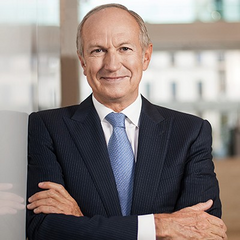 |
Chairman of the Board of Directors
Chairman of the Strategy and Sustainability Committee |
Jean-Paul Agon joined the L’Oréal Group in 1978. Following an international career as General Manager of the Consumer Products Division in Greece and of L’Oréal Paris in France, International Managing Director of Biotherm, General Manager of L’Oréal Germany, General Manager of the Asia Zone, Chairman and Chief Executive Officer of L’Oréal USA, Jean-Paul Agon was appointed as Deputy Chief Executive Officer of L’Oréal in 2005, and then Chief Executive Officer in April 2006, and finally Chairman and Chief Executive Officer in 2011. Since 1 May 2021, Jean-Paul Agon has been the Chairman of the Board of Directors. A Director of L’Oréal since 2006, he is also the Chairman of the Strategy and Sustainability Committee. Jean-Paul Agon is also the Chairman of the L’Oréal Corporate Foundation. |
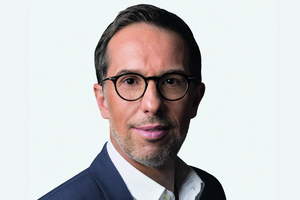 |
Chief Executive Officer | Nicolas Hieronimus joined the L’Oréal Group in 1987 and was appointed Marketing Director of the Laboratoires Garnier in 1993. After an international career as General Manager of the Garnier Maybelline Division in the UK, General Manager France then International General Manager of L’Oréal Paris, CEO of L’Oréal Mexico, Nicolas Hieronimus was appointed as General Manager of the L’Oréal Professional Products Division and joined the Executive Committee in 2008. In 2011, he was appointed President of L’Oréal Luxe, a role that he held until the end of 2018. In 2013, Nicolas Hieronimus became General Manager of Selective Divisions (Luxury, Active Cosmetics, Professional Products). He was appointed Deputy Chief Executive Officer of L’Oréal in charge of Divisions in May 2017. Nicolas Hieronimus was appointed Chief Executive Officer of L’Oréal on 1 May 2021. He has been a Director of L’Oréal since 2021. |
| Vice-Chairwoman of the Board of Directors
Member of the Strategy and Sustainability Committee Member of the Nominations and Governance Committee Member of the Human Resources and Remuneration Committee |
Françoise Bettencourt Meyers, daughter of Liliane Bettencourt and granddaughter of the founder of L’Oréal, Eugène Schueller, has been the Chairwoman of the family-owned holding company Téthys since 31 January 2012, and is the Chairwoman of the Supervisory Board of the investment subsidiary Téthys Invest, Chairwoman of the Bettencourt Schueller Foundation, and Honorary President of the Pour l’Audition Foundation. Françoise Bettencourt Meyers has been a Director of L’Oréal since 1997. Vice-Chairwoman of the Board of Directors since 2020, Françoise Bettencourt Meyers is also a member of the Strategy and Sustainability Committee, the Nominations and Governance Committee and the Human Resources and Remuneration Committee. | |
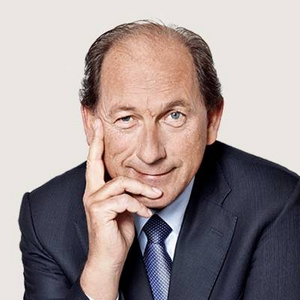 |
Vice-Chairman of the Board of Directors
Member of the Strategy and Sustainability Committee Member of the Nominations and Governance Committee Member of the Human Resources and Remuneration Committee |
Paul Bulcke, of Belgian and Swiss nationality, has served as the Chairman of the Board of Directors of Nestlé since 2017. After pursuing an international career at the highest level within the Nestlé Group, holding various positions in Europe and Latin America, in 2004 Paul Bulcke was appointed Executive Vice President and Zone Director for zone Americas of Nestlé S.A. before becoming Chief Executive Officer of Nestlé S.A. from 2008 to 2016. Paul Bulcke was a Director of L’Oréal from 2012 to June 2014 and then again since 2017. Vice-President of the Board of Directors, Paul Bulcke is also a member of the Strategy and Sustainability Committee, the Nominations and Governance Committee and the Human Resources and Remuneration Committee. |
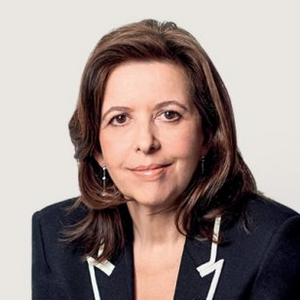 |
Chairwoman of the Human Resources and Remuneration Committee
Member of the Nominations and Governance Committee |
Sophie Bellon is Chairwoman of the Board of Directors and CEO of Sodexo. After a career in finance in the United States, she joined Sodexo in 1994, where she held various positions, including as the Chief Executive Officer of the Corporate Services business unit of Sodexo France and as Research, Development and Innovation Strategy Manager of Sodexo. Sophie Bellon has been a Director of L’Oréal since 2015. She is Chairwoman of the Human Resources and Remuneration Committee and member of the Nominations and Governance Committee. |
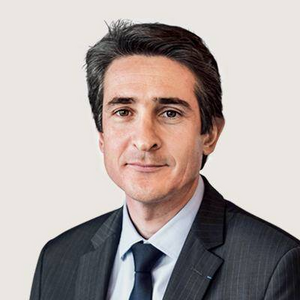 |
Chairman of the Nominations and Governance Committee
Member of the Strategy and Sustainability Committee |
Patrice Caine has been Chairman and Chief Executive Officer of the Thales Group since December 2014, after holding management positions in various operating units (Aviation and Naval, Communications, Navigation and Identification, Air Systems, Radio-Communication Products, Network and Infrastructure Systems, and Protection Systems) from 2002 to 2013. Patrice Caine has been a Director of L’Oréal since 2018. He is Chairman of the Nominations and Governance Committee and member of the Strategy and Sustainability Committee. |
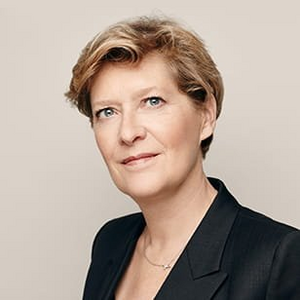 |
Member of the Audit Committee
Member of the Human Resources and Remuneration Committee |
Fabienne Dulac is Chief Transformation Officer of the Orange Group from April 2023 and a member of its Executive Committee since 2015. She joined this group in 1997 and held various positions in marketing, business development, communication and digital before serving as Chief Executive Officer of Orange France from 2015 to April 2023. She is also a Director of La Française des Jeux and a Director of Willa (an incubator dedicated to female entrepreneurship). Fabienne Dulac has been a Director of L’Oréal since 2019 and is a member of the Audit Committee and the Human Resources and Remuneration Committee. |
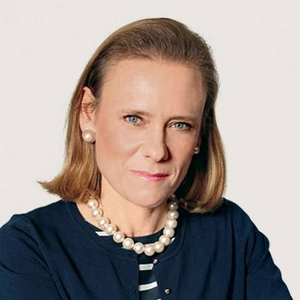 |
Member of the Human Resources and Remuneration Committee | Belén Garijo, of Spanish nationality, is Chairwoman of the Management Board and Chief Executive Officer of the Merck group. She previously served as Chair and Chief Executive Officer of Merck Healthcare, an entity encompassing all the pharmaceutical activities of the Merck group. Belén Garijo has been a Director of L’Oréal since 2014 and is a member of the Human Resources and Remuneration Committee. She is also a Director of BBVA (Spain). |
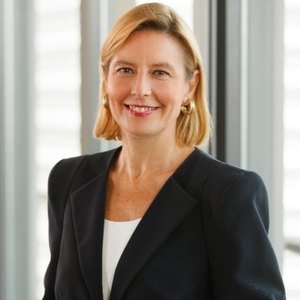 |
Member of the Audit Committee | Béatrice Guillaume-Grabisch has been Executive Vice-President and Global Head of Human Resources and Business Services of the Nestlé Group which she joined in 2013. She was formerly Chief Executive Officer of Nestlé Germany after a career in various consumer goods groups (Colgate-Palmolive, Beiersdorf, Johnson & Johnson, L’Oréal, Coca-Cola). Béatrice Guillaume-Grabisch has been a Director of L’Oréal since 2016 and is a member of the Audit Committee. |
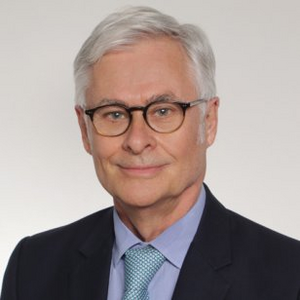 |
Member of the Human Resources and Remuneration Committee | Thierry Hamel is a Project Manager – Sales Excellence & Vocational Training in the Professional Products Division in France. In April 2022, Thierry Hamel was appointed as a Director representing the employees by the CFE-CGC union for a period of four years. He is a member of the Human Resources and Remuneration Committee. |
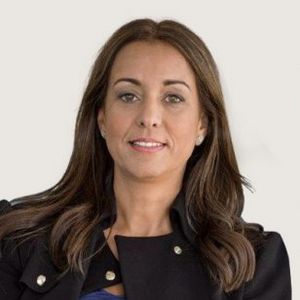 |
Member of the Audit Committee | IIlham Kadri, of French and Moroccan nationality, has been Chairwoman of the Executive Committee and CEO of Solvay since March 2019. Ilham Kadri had been CEO and Chairwoman of the American company Diversey since 2013. Ilham Kadri has international experience acquired in leading industrial companies (Shell, UCB, Dow, Sealed Air, etc.) where she performed roles in research and development, sales, marketing, strategy, business management and digital technology. She is also a director of A.O. Smith Corporation. Ilham Kadri has been a Director of L’Oréal since 2020 and is a member of the Audit Committee |
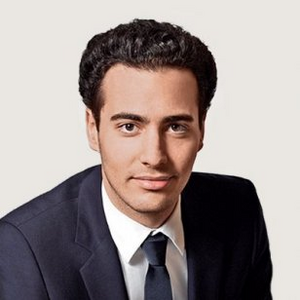 |
Member of the Strategy and Sustainability Committee | Jean-Victor Meyers has been a member of the Supervisory Board of the family-owned holding company Téthys since January 2011, and is a member of the Supervisory Board of the investment subsidiary Téthys Invest. Jean-Victor Meyers has been a Director of L’Oréal since 2012 and is a member of the Strategy and Sustainability Committee. |
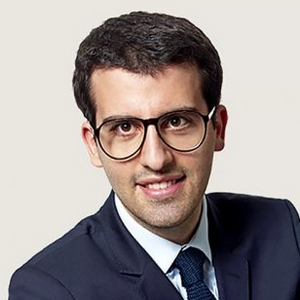 |
Member of the Audit Committee | Nicolas Meyers has been a member of the Supervisory Board of the family-owned holding company Téthys since 2011, member of the Supervisory Board of the investment subsidiary Téthys Invest since 2016, and Director of the Bettencourt Schueller Foundation since 2012. Nicolas Meyers has been a Director of L’Oréal since 2020. He is a member of the Audit Committee. |
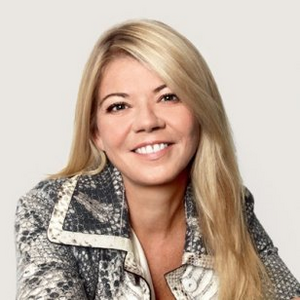 |
Chairwoman of the Audit Committee | Virginie Morgon was Chairwoman of the Management Board of Eurazeo from 2008 to February 2023, after sixteen years at Lazard. She is also Co-Chair of the Paris Committee of the Human Rights Watch. Virginie Morgon has been a Director of L’Oréal since 2013 and is Chairwoman of the Audit Committee |
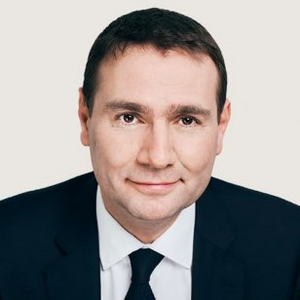 |
Member of the Strategy and Sustainability Committee | Alexandre Ricard has been Chairman and Chief Executive Officer of Pernod Ricard since February 2015. He joined Pernod Ricard in 2003, after seven years as a strategy consultant at Accenture and as an M&A consultant at Morgan Stanley. In 2004, he was appointed Director of Finance and Administration of Irish Distillers, and then in 2006, Chief Executive Officer of Pernod Ricard Asia Duty Free. In 2008, he was appointed Chairman and Chief Executive Officer of Irish Distillers and joined the Executive Committee of Pernod Ricard. In 2011, he joined the General Management of Pernod Ricard as Deputy Chief Executive Officer in charge of the distribution network. Alexandre Ricard has been a Director of L’Oréal since 2021 and is a member of the Strategy and Sustainability Committee. |
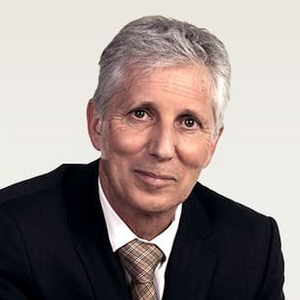 |
Member of the Audit Committee | Benny de Vlieger, of Belgian nationality, is a Sales Representative for the Consumer Products Division in Belgium. In April 2022, Benny de Vlieger was appointed as a Director representing the employees by the Instance Européenne de Dialogue Social/European Works Council (IEDS/EWC) for a period of four years. He is a member of the Audit Committee. |
Macroeconomic analysis edit edit source
1. GDP Growth: edit edit source
L'Oréal's performance is often correlated with overall economic growth. During economic expansions, consumers tend to have higher disposable income for discretionary spending on cosmetics and beauty products.
2. Consumer Confidence: edit edit source
- High consumer confidence can lead to increased demand for cosmetics and luxury products, benefiting L'Oréal's higher-end brands.
- In times of economic uncertainty, consumers might cut back on non-essential spending, impacting sales.
3. Exchange Rates: edit edit source
Fluctuations in exchange rates can impact L'Oréal's profitability, as it operates globally. A stronger Euro, for instance, might impact the competitiveness of L'Oréal's exports.
4. Interest Rates: edit edit source
Changes in interest rates can affect consumer borrowing costs and consumer spending. Lower rates can potentially stimulate consumer spending on beauty products.
5. Inflation Rate: edit edit source
Moderate inflation can influence L'Oréal's pricing strategy. If costs rise due to inflation, L'Oréal might adjust its product pricing.
6. Unemployment Rate: edit edit source
- Higher unemployment might lead to decreased consumer spending on discretionary items like cosmetics.
- However, L'Oréal's diverse brand portfolio could provide some cushion, as different brands cater to various market segments.
- This could be of huge impact in countries with higher unemployment rate such as Spain with 12.7%
7. Global Economic Trends: edit edit source
- L'Oréal's international presence means that its performance is influenced by global economic trends.
- Economic growth in emerging markets can provide growth opportunities for L'Oréal's expansion.
8. Technological Advances: edit edit source
Technological advancements can impact L'Oréal's research and product development, leading to innovative products and solutions.
9. Sustainability Trends: edit edit source
- Growing emphasis on sustainability might influence consumer preferences for environmentally friendly products. L'Oréal's sustainability initiatives could align with these trends.
10. Digital Transformation: edit edit source
L'Oréal's ability to adapt to the digital landscape can impact its online sales and engagement with consumers through digital platforms.
Conclusion: edit edit source
L'Oréal's business performance is intertwined with the broader macroeconomic environment. Economic growth, consumer confidence, exchange rates, and technological trends can significantly influence the company's sales, profitability, and strategic decisions. The company's diverse brand portfolio and international presence allow it to navigate varying economic conditions and consumer preferences. Additionally, L'Oréal's commitment to sustainability and digital transformation positions it to capture opportunities arising from these evolving trends.
Thriving countries edit edit source
1. United States: edit edit source
The U.S. has consistently been one of the largest beauty markets in the world, and L'Oréal has a strong presence in this market. Brands like L'Oréal Paris, Maybelline New York, Lancôme, and Kiehl's have performed well in the U.S.
2. China: edit edit source
China's rapidly growing middle class and increasing beauty consciousness have made it a crucial market for L'Oréal. The company has made strategic efforts to cater to Chinese consumers through various brands and product lines.
3. France: edit edit source
L'Oréal's home country also remains an important market. The company's strong heritage and reputation have contributed to its success in the French market.
4. Brazil: edit edit source
Brazil is a significant market for cosmetics and personal care products. L'Oréal's presence in this market has been bolstered by its brands like L'Oréal Paris and Garnier.
5. Japan: edit edit source
Japan is known for its beauty and skincare culture. L'Oréal has been successful in this market through brands like Shu Uemura and Kérastase.
6. Other Developed Markets: edit edit source
Other developed markets in Europe and Asia, such as the United Kingdom, Germany, and South Korea, contribute to L'Oréal's global sales.
ESG edit edit source
L'Oréal's approach to Environmental, Social, and Governance (ESG) factors reflects its commitment to sustainability, ethical practices, and responsible corporate citizenship. ESG considerations have become increasingly important for businesses as stakeholders place a greater emphasis on companies' impacts on the environment, society, and their overall governance structure. Here's what you need to know about L'Oréal's ESG initiatives:
Environmental Initiatives edit edit source
1. Sustainable Sourcing: edit edit source
L'Oréal is committed to responsible sourcing of raw materials. The company strives to ensure that the ingredients used in its products are sustainably and ethically sourced, with a focus on biodiversity and environmental preservation.
2. Reducing Carbon Footprint: edit edit source
L'Oréal has set ambitious goals to reduce its carbon emissions and energy consumption. This includes efforts to use renewable energy sources, improve energy efficiency, and reduce greenhouse gas emissions across its operations.
3. Circular Economy: edit edit source
The company is actively working to implement circular economy principles by promoting recycling, reducing waste, and designing products with recyclability in mind. L'Oréal aims to achieve zero waste to landfill at its production sites.
4. Biodiversity Protection: edit edit source
L'Oréal places a strong emphasis on preserving biodiversity. The company supports various initiatives to protect ecosystems, conserve biodiversity, and promote sustainable agricultural practices.
Social Initiatives edit edit source
1. Diversity and Inclusion: edit edit source
L'Oréal is dedicated to fostering diversity and inclusion within its workforce. The company strives to create an inclusive environment that values different perspectives, backgrounds, and talents.
2. Ethical Labor Practices: edit edit source
L'Oréal adheres to ethical labor practices throughout its supply chain. The company works to ensure fair wages, safe working conditions, and ethical treatment for its employees and suppliers.
3. Gender Equality: edit edit source
L'Oréal is actively involved in promoting gender equality within the company and the industry. The company has initiatives to empower women in leadership positions and support gender balance across all levels.
4. Community Engagement: edit edit source
L'Oréal is engaged in various community initiatives, including education, social welfare, and supporting vulnerable communities. The company's philanthropic efforts aim to make a positive impact on society.
Governance Initiatives: edit edit source
1. Transparent Reporting: edit edit source
L'Oréal is committed to transparently reporting its ESG initiatives and progress. The company provides regular updates on its sustainability performance through reports and disclosures.
2. Ethical Governance: edit edit source
L'Oréal maintains high ethical standards in its corporate governance. The company's leadership is accountable for responsible decision-making and upholding the company's values.
3. Board Diversity: edit edit source
L'Oréal recognizes the importance of board diversity in effective governance. The company promotes diversity and expertise within its board of directors.
L'Oréal's ESG initiatives reflect its understanding of the interconnectedness of environmental, social, and governance factors in shaping the company's long-term success and impact on society. By integrating sustainability and responsible practices into its business operations, L'Oréal aims to create value for all stakeholders while contributing to a more sustainable and equitable future.
In March, L’Oréal was again ranked among the world’s most gender-equitable companies by Equileap. L’Oréal was ranked number one in France in Equileap’s 2023 Gender Equality Ranking and placed 11th globally among 3,500 companies in 23 countries. Since Equileap’s launch six years ago, L’Oréal has been recognised in every ranking published.
L'Oréal has been recognised by the international organisation Ethisphere as one of the World’s Most Ethical Companies for the 14th time. The award recognises the Group’s long-term commitment and its role as a leader in applying ethical principles to its sales practices, business and corporate culture.
The rating agency Sustainalytics granted “Industry Top Rated” status to L'Oréal in its 2023 ESG Risk Ratings. With a score of 19.1, the Group is classified as a “Low Risk" company and a top-rated performer within the industry, ranking 5th out of 105 in the Household Products group.
The Fragrance Foundation has announced that it will honour Nicolas Hieronimus, L’Oréal’s Chief Executive Officer, with its prestigious Hall of Fame Award in New York in June 2023. The award seeks to honour the extraordinary contribution of Nicolas Hieronimus to the fragrance industry for more than a decade, as well as his leadership and vision, reflecting the values of environmental responsibility, diversity, equity and inclusion promoted by the Foundation.
Research, Beauty Tech and Digital edit edit source
In March, the venture capital fund BOLD (Business Opportunities for L'Oréal Development) invested in a biotechnology venture led by Geno. The investment will contribute to the development of new sustainable ingredients derived from living organisms: harnessing Geno’s biotechnology expertise, L'Oréal will replace traditional ingredients with biosourced alternatives, such as those produced from plant sugars. These new ingredients will be used in a range of L’Oréal’s products, marking an essential step towards the Group’s goals of 100% eco-designed products and 95% of ingredients in its formulas biosourced, derived from abundant minerals or circular processes by 2030.
Introducing L'Oréal Paris Colorsonic, a groundbreaking innovation in at-home hair color, marking a significant milestone as L'Oréal celebrates 115 years of excellence. Set to launch in 2024, Colorsonic revolutionizes hair coloring with its unique approach. As the first of its kind, this haircolor device simplifies the process by seamlessly blending and applying the formula at the roots, delivering salon-quality, long-lasting results in the comfort of your own home. With a single button press, Colorsonic handles the rest. It masterfully blends colorant and developer at a perfect 1:1 ratio, ensures even coverage by parting and saturating every strand, and utilizes smart bristles that move 300 times per minute, adapting to hair type for precise formula deposition. Complementing the device is L'Oréal Paris's inaugural multi-usage hair color cartridge, offering flexibility for future applications. This environmentally conscious solution offers over 20 shades, each free from harmful components like ammonia, silicones, parabens, and more, while ensuring radiant shine, hydration, and conditioning. Colorsonic, a culmination of 9 years of meticulous development, stands as a Time Magazine Invention list honoree, a CES Best of Innovation Award recipient, and is fortified by more than 20 patents. In three simple steps—choose your shade, insert the multi-use color cartridge, and press to apply—you can effortlessly achieve flawless, salon-grade hair color. Colorsonic embodies innovation, ease, and perfection for all.
Presenting HAPTA, the world's pioneering handheld computerized makeup applicator, a groundbreaking innovation by Lancôme. Building on their legacy of empowering women through personalized beauty solutions since 2009, Lancôme introduces HAPTA as a testament to their commitment to accessible beauty driven by cutting-edge technology.
HAPTA is a revolutionary device designed to bring the science of touch to individuals facing hand-motion challenges, including those with conditions like arthritis, Huntington’s Disease, and post-stroke motion limitations. This motion-stabilizing marvel addresses the needs of individuals with limited mobility or grip strength, ensuring precise makeup application becomes effortlessly attainable. It serves those with restricted arm movement, struggling with lipstick or mascara application angles, as well as those contending with hand tremors and reduced sensation.
Debuting at the Consumer Electronics Show 2023 in Las Vegas, HAPTA initially showcased its prowess in lipstick application and has since expanded to include mascara, two quintessential means of self-expression through beauty. As an embodiment of Beauty Tech, HAPTA truly democratizes beauty by making it more accessible, achievable, and user-friendly for everyone.
The operation of HAPTA is a straightforward three-step process: Insert your chosen lipstick or mascara shade, watch the device automatically power on, apply your makeup with precision, and witness HAPTA's technology counteract unintended movements to maintain product consistency. Revel in the flawless effects of HAPTA's precision makeup application.
Behind HAPTA's innovation lies advanced sensors and motion-stabilizing technology, ensuring the device remains level by constantly adjusting to the user's position. Additionally, HAPTA boasts an ergonomic design featuring an easy-grip handle, thoughtfully tailored for individuals with mobility conditions affecting their arms, hands, and wrists. With HAPTA, Lancôme introduces a transformative approach that enriches the beauty experience, granting independence and confidence to those with diverse mobility challenges.
L’Oréal is the official sponsor of the exclusive beauty accelerator within STATION F, the 366,000 square foot Parisian campus designed to host a startup ecosystem under one roof.The L’Oréal beauty accelerator will welcome up to 20 high potential early stage startups starting in January 2018 and accelerate their development by bringing them strategic mentoring and operational support.
Growth- New Acquisitions edit edit source
On 3 April, L’Oréal announced that it had signed an agreement with Natura &Co to acquire Aēsop, the Australian luxury beauty brand. Created in 1987, Aēsop is a global super brand known for its skin, hair and body products, available across luxury retail, beauty and hospitality locations around the world. Aēsop operates online and in around 400 exclusive points of sale across the Americas, Europe, Australia and Asia, with a nascent footprint in China where the first store opened in 2022. The closing is subject to certain regulatory approvals and other customary conditions.
Markets edit edit source
Total Addressable Market edit edit source
Here, the total addressable market (TAM) is defined as the global beauty market, and based on a number of assumptions, it is estimated that the size of the market as of today (2022), in terms of revenue, is $430 billion.
Serviceable Available Market edit edit source
Here, the serviceable available market (SAM) is defined as the global beauty market, and based on a number of assumptions, it is estimated that the size of the market as of today (2022), in terms of revenue, is $430 billion.
Serviceable Obtainable Market edit edit source
Here, the serviceable obtainable market (SOM) is defined as the beauty market in the 150 countries L'Oréal operates in, and based on a number of assumptions, it is estimated that the size of the market as of today (2022), in terms of revenue, is about $200 billion.
L'Oréal thrives in multiple markets within the beauty and cosmetic industry. The company's diverse brand portfolio allows it to capture opportunities across various segments and geographies. Here are some key markets where L'Oréal has been particularly successful:
1. Cosmetics and Skincare: edit edit source
L'Oréal is a dominant player in the cosmetics and skincare markets globally. Brands like L'Oréal Paris, Maybelline New York, and Garnier have mass-market appeal and a wide reach. These brands cater to a diverse range of consumers seeking affordable and high-quality beauty products.
2. Luxury Beauty: edit edit source
L'Oréal has a strong presence in the luxury beauty market, with brands like Lancôme, Yves Saint Laurent Beauté, and Giorgio Armani Beauty. These brands target consumers looking for premium and prestige beauty products.
3. Haircare: edit edit source
L'Oréal's brands in the haircare segment, such as L'Oréal Professionnel, Kérastase, Redken, and Matrix, cater to both consumer and professional markets. These brands benefit from the growing interest in haircare and hairstyling products.
4. Global Reach: edit edit source
L'Oréal's international footprint allows it to thrive in various geographic markets. The company's presence in both developed and emerging markets provides it with a balanced exposure to different consumer preferences and economic conditions.
5. Digital Transformation: edit edit source
L'Oréal's emphasis on digital transformation has enabled it to thrive in the e-commerce and online retail space. The company's online platforms, partnerships, and digital marketing strategies have facilitated direct consumer engagement and sales.
6. Sustainability and Ethics: edit edit source
L'Oréal's commitment to sustainability and ethical practices aligns well with the growing consumer demand for environmentally friendly and ethical products. This focus has helped the company thrive among conscious consumers who prioritize responsible brands.
7. Innovation and Research:
L'Oréal's continuous investment in research and innovation has allowed it to thrive by introducing new products and technologies that cater to changing consumer preferences and needs.
It's important to note that while L'Oréal is successful in various markets, individual brand performance may vary based on regional preferences, economic conditions, and cultural factors. Additionally, the beauty industry is dynamic and subject to shifts in trends and consumer behaviour, which can impact how well L'Oréal thrives in different markets over time.
Competitor analysis edit edit source
The most prominent competitor of L'Oréal is its American counter part Estée Lauder Companies Inc.
L'Oréal: edit edit source
1. Diverse Brand Portfolio: L'Oréal owns a wide range of brands across various market segments, including mass market, luxury, professional, and active cosmetics. Its portfolio includes brands like L'Oréal Paris, Lancôme, Maybelline New York, and Kérastase.
2. Global Presence: L'Oréal operates in numerous countries, providing it with a strong international footprint. It has the ability to tailor products to local consumer preferences while leveraging global trends.
3. Innovation and Research: L'Oréal invests significantly in research and innovation, leading to the development of advanced skincare, haircare, and beauty products. Its focus on science and technology enhances product quality.
4. Sustainability Initiatives: L'Oréal is committed to sustainability and ethical practices. It has implemented various initiatives to reduce its environmental impact and promote responsible sourcing.
5. Digital Transformation: L'Oréal has embraced digital platforms, e-commerce, and technology-driven marketing strategies to engage with consumers and enhance its online presence.
6. Marketing Strategies: : Premium positioning with a wide distribution network. Collaborates with celebrities and models for brand promotion.
7. Growth Trends: Recorded remarkable 25% revenue growth. Utilizes e-commerce and offers incentives like discounts and coupons.
The Estée Lauder Companies Inc.: edit edit source
1. Prestigious Brand Portfolio: Estée Lauder owns luxury and prestige beauty brands, including Estée Lauder, Clinique, MAC Cosmetics, and La Mer. Its brands often cater to a higher-end market segment.
2. Innovation and Quality: Estée Lauder is known for its focus on quality and luxury, with a reputation for innovative products and cutting-edge formulations.
3. Global Reach: The company has a strong international presence, catering to consumers seeking high-end skincare, makeup, and fragrance products in various regions.
4. E-commerce and Digital Engagement: Estée Lauder has invested in digital strategies, e-commerce platforms, and engaging online experiences to connect with consumers and drive online sales.
5. Sustainability Commitment: The company has made commitments to environmental sustainability and responsible sourcing in line with consumer demand for ethical and eco-friendly products.
6. Marketing Strategies: Premium brand image, targeting higher-income segments. Utilizes influencer marketing and promotional campaigns.
7. Growth Trends: Registered 8% growth. Capitalizes on e-commerce and traditional promotions, targeting global customers.
Key Takeaways: edit edit source
- Both L'Oréal and Estée Lauder are giants in the beauty industry, but they have slightly different brand focuses and target markets.
- L'Oréal has a more extensive brand portfolio, catering to a broader range of consumers across different price points.
- Estée Lauder specializes in luxury and prestige brands, with a strong emphasis on quality and innovation.
- Both companies are investing in sustainability, digital transformation, and engaging consumers online.
- Both Estée Lauder and L'Oréal are major players in the cosmetics industry, known for their premium brands and diverse product ranges.
- Estée Lauder's growth and revenue surge contrast L'Oréal's position as the largest cosmetics company.
- Both companies utilize e-commerce, influencer marketing, and traditional promotions for global expansion and customer engagement.
This analysis demonstrates the strengths, strategies, and growth trajectories of Estée Lauder and L'Oréal, highlighting their positions within the competitive cosmetics market.
Financials edit edit source
| Year end date | 31/12/2019 | 31/12/2020 | 31/12/2021 | 31/12/2022 |
|---|---|---|---|---|
| All numbers in thousands of EUR. (€'000) | ||||
| Revenue | 29,873,600 | 27,992,100 | 32,287,600 | 38,260,600 |
| Cost of Revenue | 8,064,700 | 7,532,300 | 8,433,300 | 10,577,400 |
| Gross Profit | 21,808,900 | 20,459,800 | 23,854,300 | 27,683,200 |
| Operating Expenses: | 16,261,400 | 15,320,800 | 17,693,900 | 20,226,400 |
| General & Administrative Expense | 15,276,100 | 14,286,400 | 16,665,200 | 19,087,800 |
| Research & Development | 985,300 | 964,400 | 1,028,700 | 1,138,600 |
| Operating Income | 5,547,500 | 5,139,000 | 6,160,400 | 7,456,800 |
| Interest Expense | 87,700 | 92,500 | 48,100 | 76,900 |
| Pretax Income | 5,411,400 | 4,776,500 | 6,046,900 | 7,610,600 |
| Income Tax | 1,657,200 | 1,209,800 | 1,445,400 | 1,899,400 |
| Income from Continuing Operations | 3,755,200 | 3,567,600 | 4,602,200 | 5,712,600 |
| Net Income | 3,750,000 | 3,563,400 | 4,597,100 | 5,706,600 |
| Year end date | 31/12/2019 | 31/12/2020 | 31/12/2021 | 31/12/2022 |
|---|---|---|---|---|
| All numbers in thousands of EUR. (€'000) | ||||
| Assets: | ||||
| Total Assets | 43,809,800 | 43,606,900 | 43,013,400 | 46,844,200 |
| Current Assets: | ||||
| Cash And Cash Equivalents | 5,286,000 | 6,405,900 | 2,713,800 | 2,617,700 |
| Other Short Term Investments | 23,300 | 6,700 | 4,800 | 23,100 |
| Receivables | 4,086,700 | 3,511,300 | 4,021,000 | 4,755,500 |
| Inventory | 2,920,800 | 2,675,800 | 3,166,900 | 4,079,400 |
| Other Current Assets | 420,500 | 451,800 | 754,000 | 690,200 |
| Total Current Assets | 13,916,500 | 14,560,100 | 12,075,800 | 14,049,600 |
| Non-Current Assets: | ||||
| Net PPE | 5,536,500 | 4,750,500 | 4,773,700 | 4,964,500 |
| Goodwill | 9,585,600 | 10,514,200 | 11,074,500 | 11,717,700 |
| Intangible Assets | 3,163,700 | 3,356,300 | 3,462,700 | 3,640,100 |
| Other Long-Term assets | -100 | - | 100 | 399,900 |
| Total Non-Current Assets | 29,893,300 | 29,046,800 | 30,937,600 | 32,794,500 |
| Liabilities: | ||||
| Total Liabilities | 14,383,800 | 14,608,100 | 19,420,800 | 19,657,700 |
| Current Liabilities: | ||||
| Current Debt | 841,200 | 856,300 | 4,619,400 | 1,012,700 |
| Accounts Payable | 4,658,400 | 4,764,500 | 6,068,100 | 6,345,600 |
| Other Current Liabilities | 235,300 | 424,300 | 399,000 | 391,500 |
| Total Current Liabilities | 10,868,500 | 11,130,100 | 16,583,200 | 13,719,600 |
| Non-Current Liabilities: | ||||
| Long-Term Debt | 9,600 | 8,600 | 10,700 | 3,017,600 |
| Deferred Tax Liabilities | 737,700 | 706,600 | 810,300 | 905,600 |
| Other Long-Term Liabilities | - | -100 | -100 | 200 |
| Total Non-Current Liabilities | 3,515,300 | 3,478,000 | 2,837,600 | 5,938,100 |
| Equity: | ||||
| Common Stock | 111,600 | 112,000 | 111,500 | 107,000 |
| Retained Earnings | 3,750,000 | 3,563,400 | 4,597,100 | 5,706,600 |
| Total Stockholders' Equity | 29,419,300 | 28,993,000 | 23,585,700 | 27,178,500 |
| Total Liabilities & Stockholders' Equity | 43,809,800 | 43,606,900 | 43,013,400 | 46,844,200 |
| Year end date | 31/12/2019 | 31/12/2020 | 31/12/2021 | 31/12/2022 |
|---|---|---|---|---|
| All numbers in thousands of EUR. (€'000) | ||||
| Operating Cash Flow | ||||
| Net Income from Operating Activities | 3,750,000 | 3,563,400 | 4,597,100 | 5,706,600 |
| Depreciation & Amortisation | 1,958,300 | 2,028,100 | 1,781,000 | 1,536,100 |
| Stock-Based compensation | 144,400 | 129,700 | 155,200 | 169,000 |
| Inventory | -53,800 | 101,900 | -373,300 | -865,400 |
| Other Working Capital | 5,031,800 | 5,480,900 | 5,653,200 | 4,935,100 |
| Other Non-Cash Items | 1,900 | 5,800 | 16,500 | -38,700 |
| Change in Working Capital | 460,500 | 729,200 | 87,900 | -1,011,300 |
| Net Cash Flows from Operating Activities | 6,262,800 | 6,453,300 | 6,728,400 | 6,278,300 |
| Investing Cash Flow | ||||
| Investments in Property, Plant & Equipment | -1,231,000 | -972,400 | -1,075,200 | -1,343,200 |
| Net Acquisitions | -9,300 | -1,626,800 | -455,700 | - |
| Other Investing Activities | - | - | - | -100 |
| Net Cash Flows from Investing Activities | -1,289,600 | -2,639,100 | -1,633,700 | -2,223,800 |
| Other | ||||
| Net Change in Cash | 1,294,000 | 1,119,900 | -3,692,100 | -96,100 |
| Beginning Cash Position | 3,992,000 | 5,286,000 | 6,405,900 | 2,713,800 |
| End Cash Position | 5,286,000 | 6,405,900 | 2,713,800 | 2,617,700 |
| Capital Expenditure | -1,231,000 | -972,400 | -1,075,200 | -1,343,200 |
| Free Cash Flow | 5,031,800 | 5,480,900 | 5,653,200 | 4,935,100 |
Investment thesis edit edit source
Reasons to invest edit edit source
1. Registered Shares and Loyalty Rewards: L'Oréal offers registered shares that are directly recorded in the company's books, providing shareholders with direct communication and information from L'Oréal. By registering shares before the end of 2023 and holding them continuously for two calendar years (2024/2025), investors are eligible for a +10% loyalty bonus on dividends. This bonus applies to shares held in registered form and can be received annually from 2026 onwards. (1) Bonus dividends are awarded for shares held in registered form for at least two calendar years, up to a maximum of 0.5% of capital for any shareholder.
2. Impressive Total Shareholder Return (TSR): L'Oréal prioritizes Total Shareholder Return as a key measure of value creation. With a +14.0% TSR over ten years, an investment of €15,000 in L'Oréal shares in 2013 yielded significant returns. This calculation includes reinvestment of dividends, excluding bank charges and taxes. TSR accounts for share price appreciation and dividends received, emphasizing L'Oréal's commitment to generating returns for its investors.
3. Long-Term Perspective and Innovation: L'Oréal's strong foundation is based on a long-term vision, stable shareholder structure, and solid corporate governance. Amid the uncertain global economic landscape, these attributes position L'Oréal for sustainable growth. Furthermore, L'Oréal's commitment to innovation is evident through its passionate teams, 20 research centers in 11 countries, and a dedicated team of over 4,000 researchers focused on shaping the future of beauty and embracing technology. The company's innovation-driven approach contributes to its status as a Beauty Tech powerhouse.
First Quarter 2023 Sales edit edit source
L’Oréal has had a very strong start in the first quarter of 2023, demonstrating impressive growth across various metrics.
- Sales: The company experienced remarkable growth in sales, reaching 10.38 billion euros, a +13.0% increase like-for-like and a +14.6% increase based on reported figures.
- Market Position: L’Oréal's position as a global leader in the beauty industry has been further solidified through another quarter of market outperformance.
- Divisional Performance: Growth was observed across all Divisions, with the Dermatological Beauty and Consumer Products Divisions standing out for their exceptional performance.
- Geographic Reach: L’Oréal experienced growth across all geographic Zones, particularly excelling in emerging markets. Strong double-digit growth was achieved in all Zones except for North Asia, which was affected by stock-in-trade reductions in mainland China early in the year.
- Value and Volume Growth: The growth was not only in terms of value but also in volume, indicating a comprehensive performance across different aspects of the business.
- Ethical Recognition: L’Oréal was recognized as one of the world's most ethical companies by Ethisphere for the 14th time, emphasizing the company's commitment to ethical business practices.
- Gender Equality: The Equileap Gender Equality Ranking positioned L’Oréal as the 11th worldwide and the leading company in France among 3,500 companies across 23 countries.
- Acquisition: An agreement with Natura &Co was reached to acquire Aēsop, an Australian luxury beauty brand, contributing to L’Oréal Luxe.
Nicolas Hieronimus, CEO of L'Oréal, commented on the figures:
“In a beauty market that remains very dynamic, L’Oréal has maintained strong growth momentum and posted an excellent first quarter, with sales up +13.0% like-for-like1 and +14.6% reported. Boosted by valorized innovations in all Divisions and the engagement of our teams around the world, L’Oréal has outperformed the market in all geographic Zones and strengthened its leadership position. This performance, which has yet to benefit from China’s reopening, demonstrates the strength of L’Oréal’s balanced multipolar model. I am thrilled to soon welcome the magnificent Aēsop brand and its teams, which will reinforce L’Oréal Luxe. Mindful of the current uncertainties, we remain optimistic about the outlook for the beauty market, ambitious for the future and confident in our ability to keep outperforming the market and achieve another year of growth in sales and profits in 2023.”
Key Financial Details:
- Like-for-Like Growth: Group sales increased by +13.0% based on comparable scope of consolidation and constant exchange rates.
- Scope of Consolidation Impact: Changes in the scope of consolidation had a net impact of +1.0%.
- Growth at Constant Exchange Rates: Growth at constant exchange rates amounted to +14.0%.
- Currency Fluctuations: Currency fluctuations positively impacted growth by +0.6%. Extrapolating exchange rates until the end of the year would result in a potential negative currency impact of around -4.0% on full-year 2023 sales.
- Reported Sales: Group sales, as reported, increased by +14.6% to reach 10.38 billion euros.
Risk Analysis edit edit source
| Identified Risk | Risk Management |
|---|---|
| Due to its international presence, L’Oréal is naturally exposed to currency fluctuations. In addition, commercial flows resulting from purchases and sales of items, products, royalties and services arise between subsidiaries in different countries. Procurement by subsidiaries is mainly in the currency of the supplier’s country.
Fluctuations between the main currencies may therefore have an impact on the results of the subsidiaries, but also on the Group’s results during the conversion of non-euro subsidiaries’ accounts into euros and, as a result, make it difficult to compare performances between two financial years. Furthermore, as a result of the inflation situation, the Group is exposed to increased volatility in global currencies and to an increase in the cost of its supplies, in particular. |
The Treasury and Finance Charter outlines the guiding
principles that Group entities must adhere to ensure a prudent and centralized approach to managing currency risk. L'Oreal employs a pre-established strategy to mitigate currency risk, involving hedging a significant portion of next year's anticipated needs through currency forward contracts or options. These hedging requirements are determined based on operating budgets of individual subsidiaries for the upcoming year. Adjustments to the hedging approach are made throughout the year as the requirements evolve. To enhance clarity in monitoring generated flows, currency risk management is centralized under the Treasury and Finance Department at the headquarters, utilizing a dedicated tool for aggregating subsidiary requirements by currency (FX report). |
| The main equity risk for L’Oréal is the 9.38% stake it held in Sanofi at 31 December 2022 ,the value of which fluctuates primarily as a function of global market trends, Sanofi’s results and, more generally, economic and financial data from Sanofi and its sector.
A significant decrease in the amount of the dividend paid by Sanofi, or a significant or extended decline in its market price, could have an impact on L’Oréal’s share price. |
This interest and changes in the market in which Sanofi operates are monitored on a regular basis. As at 31 December 2022, the market value of the Sanofi share was significantly higher than the value recorded on the L’Oréal balance sheet. |
| L’Oréal’s intangible assets, which are primarily its 36 major international brands, and the goodwill recognised at the time of external growth transactions, are susceptible to impairment. | “Intangible assets” of the Consolidated Financial Statements, brands with an indefinite useful life and goodwill are not amortised but are tested for periodic impairment at least once a year. Where the recoverable amount of a brand is lower than its net book value, an impairment loss is recognised. Similarly, any difference between the recoverable amount of each cash-generating unit and the net book value of the assets including goodwill would lead to an impairment loss in respect of the asset, recorded in the income statement. |
| Business Risks | |
| L'Oréal's global presence exposes it to risks from epidemics in its 80 operating countries. These include:
1. Employee Health and Safety: Risks to employees' well-being during work and travel, and limitations due to confinement. 2. Operational Challenges: Government measures and supply shortages affecting normal operations. 3. Supply Chain Issues: Disruptions in material availability and production due to health-related restrictions. 4. Demand Reduction: Reduced product demand from restricted movement and access to retail locations. 5. Financial Struggles: Suppliers and clients facing financial strain due to decreased business. The Covid-19 pandemic's impact in 2022, particularly in China, highlighted these risks. Depending on its scope and duration, a health crisis can significantly affect L'Oréal's operations, performance, and reputation. |
L'Oréal has established a crisis management unit at the Group level to address adverse events and minimize their impact across its entities. During health crises, safeguarding employee health and adhering to local authorities' directives are paramount. The Group maintains high health and safety standards globally and adapts them as needed.
The company's flexible information systems enable remote work, bolstered by security measures. Supply chain and inventory management policies, along with business continuity plans, help anticipate and manage disruptions. Long-standing relationships with key suppliers and diversification efforts mitigate impacts. L'Oréal's wide distribution channels, strong online sales capabilities, and digital consumer relations expertise facilitate growth even in challenging circumstances. With a balanced global presence, versatile product categories, and diversified distribution channels, along with an adaptable organizational model and solid financial position, L'Oréal is well-equipped to navigate economic consequences stemming from such crises. |
| In a context of digital transformation and constant development of the Information Technologies and their uses, the Group’s business activities, expertise and, more generally, its relations with all stakeholders in its social and economic environment, depend on an increasingly virtual and digital operation.
As a result, the malfunction or shutdown of these systems, the leakage or destruction of data for exogenous or endogenous reasons (including cyberattacks, malicious acts, hacks, etc.) internally or at a third-party of the Group could have a material impact on the Group’s business activities. |
L'Oréal's IT Department has implemented stringent security rules for infrastructures, devices, and applications. A Code of Practice for Information and Communication Technologies has been introduced to adapt to evolving communication methods. To counter the increasing cyber-threats, the company is bolstering its information system security resources through a multi-year plan. This plan involves anti-intrusion measures, security audits, asset protection, and global monitoring to detect malicious activities. L'Oréal's cybersecurity approach is adapted to emerging threats, investing in incident detection and response systems. Over 73% of eligible employees have received online cybersecurity training, and the Group conducts an annual global awareness campaign called Cyberweek. |
| L'Oréal operates across 76 countries and strategically focuses on regions such as North Asia (29.6%), SAPMENA-SSA (7.7%), and Latin America (6.2%), driven by the global cosmetics market. This international presence exposes the company to potential disruptions from geopolitical tensions, high inflation, trade conflicts, and debt crises in key markets. The Russia-Ukraine conflict in 2022 could also impact global economic growth and affect L'Oréal's operating markets. | L’Oréal’s global presence and its portfolio of 36 major international brands helps to maintain a balance in sales and offsetting between the geographic zones, product categories and distribution channels. With regard to the crisis in Ukraine and Russia, L’Oréal is closely monitoring the situation and its potential for adversely impacting the global economy and, in particular, its business activity. |
| Prejudicial events or information mainly related to the use or misuse of a product, or an inappropriate individual behaviour, whether proven or not, could affect the reputation of L’Oréal, its 36 major international brands and its products and, as a result, affect sales and, more generally, its financial position.
The impact of the risk could be amplified, notably, by the explosion of digital and social media all around the world; andsocietal movements and enquiries by the civil society, consumers, etc. to the Group or the brands |
L'Oréal has established a comprehensive crisis management framework, including crisis communication training, risk management at corporate and local levels, and continuous online monitoring. Subsidiaries employ their own monitoring systems and report media risks to the Corporate Communications Department. A dedicated crisis management procedure prevents and mitigates global undesirable events, overseen by the Group crisis management officer reporting to General Management. The Code of Ethics is widely disseminated to reinforce ethical conduct and values across the organization, supported by a "Code of Good Practice for the Use of Social Media" for employees. |
| L’Oréal is subject to constant pressure from many competitors in all countries due to
its size and the positioning of its brands in various markets in which major international groups operate; local brands and new players coming from the digital economy; rapid technological changes in emerging fields of research by new operators. If the Group fails to anticipate or respond to changes in consumer expectations, especially in the areas of natural beauty, health, personalised services, connected things and environmental commitments, with innovative and adapted product offerings, its sales and growth could be affected. |
L'Oréal's innovation model evolves continually with increased investments in research and digital services. Research teams focus on diverse global beauty aspirations, while the Consumer & Market Insights Department monitors consumer expectations. These efforts, aligned with a long-term vision, address innovation challenges. The Digital and Marketing Department accelerates digital transformation to enhance consumer-brand relationships. Sustainability expectations are integral to the L’Oréal for the Future program, shaping brand and product development. The acquisition strategy remains responsive to shifts in the competitive landscape. |
References edit edit source
https://www.loreal.com/en/division-beaute-dermatologique/
https://www.loreal-finance.com/eng/news-release/first-quarter-2023-sales
https://www.loreal-finance.com/system/files/2023-03/LOREAL_2022_Annual_Report.pdf
https://www.loreal.com/en/commitments-and-responsibilities/for-the-planet/investing-for-nature/
https://www.loreal.com/en/governance/board-of-directors/
https://companiesmarketcap.com/cac-40/largest-companies-by-market-cap/
https://startuptalky.com/estee-lauder-vs-loreal/
https://seekingalpha.com/article/4525183-why-we-prefer-estee-lauder-to-loreal
https://www.loreal.com/-/media/project/loreal/brand-sites/corp/master/lcorp/press-releases/annual-results-feb-23/loreal2022annualresults.pdf?rev=1183f84df62548f8b3e237c7f5705d9e
https://finbox.com/ENXTPA:OR/financials/income_statement
https://markets.ft.com/data/equities/tearsheet/profile?s=OR:PAR
Appendices edit edit source

